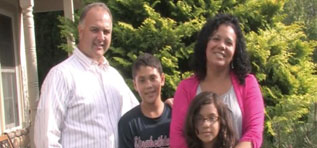Protect Children from Prescription Stimulant Abuse:
Stimulant medications including amphetamines (e.g., Adderall) and methylphenidate (e.g., Ritalin and Concerta) are often prescribed to treat children, adolescents, or adults diagnosed with attention-deficit hyperactivity disorder (ADHD).
Prescription stimulants have a calming and “focusing” effect on individuals with ADHD. They are prescribed to patients for daily use, and come in the form of tablets or capsules of varying dosages. Treatment of ADHD with stimulants, often in conjunction with psychotherapy, helps to improve ADHD symptoms along with the patient’s self-esteem, thinking ability, and social and family interactions.
A growing number of teenagers and young adults are abusing prescription stimulants to boost their study performance in an effort to improve their grades in school, and there is a widespread belief that these drugs can improve a person’s ability to learn (“cognitive enhancement”).
Prescription stimulants do promote wakefulness, but studies have found that they do not enhance learning or thinking ability when taken by people who do not actually have ADHD. Also, research has shown that students who abuse prescription stimulants actually have lower GPAs in high school and college than those who don’t. Because they suppress appetite, increase wakefulness, and increase focus and attention, they are frequently abused for purposes of weight loss or performance enhancement. Because they may produce euphoria, these drugs are also frequently abused for recreational purposes (i.e., to get high). Euphoria from stimulants is generally produced when pills are crushed and then snorted or mixed with water and injected.
All stimulants work by increasing dopamine levels in the brain—dopamine is a neurotransmitter associated with pleasure, movement, and attention. The therapeutic effect of stimulants is achieved by slow and steady increases of dopamine, which are similar to the way dopamine is naturally produced in the brain. The doses prescribed by physicians start low and increase gradually until a therapeutic effect is reached.
When taken in doses and via routes other than those prescribed, prescription stimulants can increase brain dopamine in a rapid and highly amplified manner (similar to other drugs of abuse such as methamphetamine), thereby disrupting normal communication between brain cells and producing euphoria and, as a result, increasing the risk of addiction.
Stimulants can increase blood pressure, heart rate, and body temperature and decrease sleep and appetite. When they are abused, they can lead to malnutrition and its consequences. Repeated abuse of stimulants can lead to feelings of hostility and paranoia. At high doses, they can lead to serious cardiovascular complications, including stroke.
This information and data indicate that we need to do a better job alerting all segments of society – including youth that misuse of prescription medication is extremely dangerous. Kids need to hear from parents that getting high on legal prescription drugs is just as dangerous as getting high on illegal street drugs. Keep kids safe—monitor all prescription medications closely and discuss the risks of non-medical use of prescription drugs with your children today.
Source: NIDA





